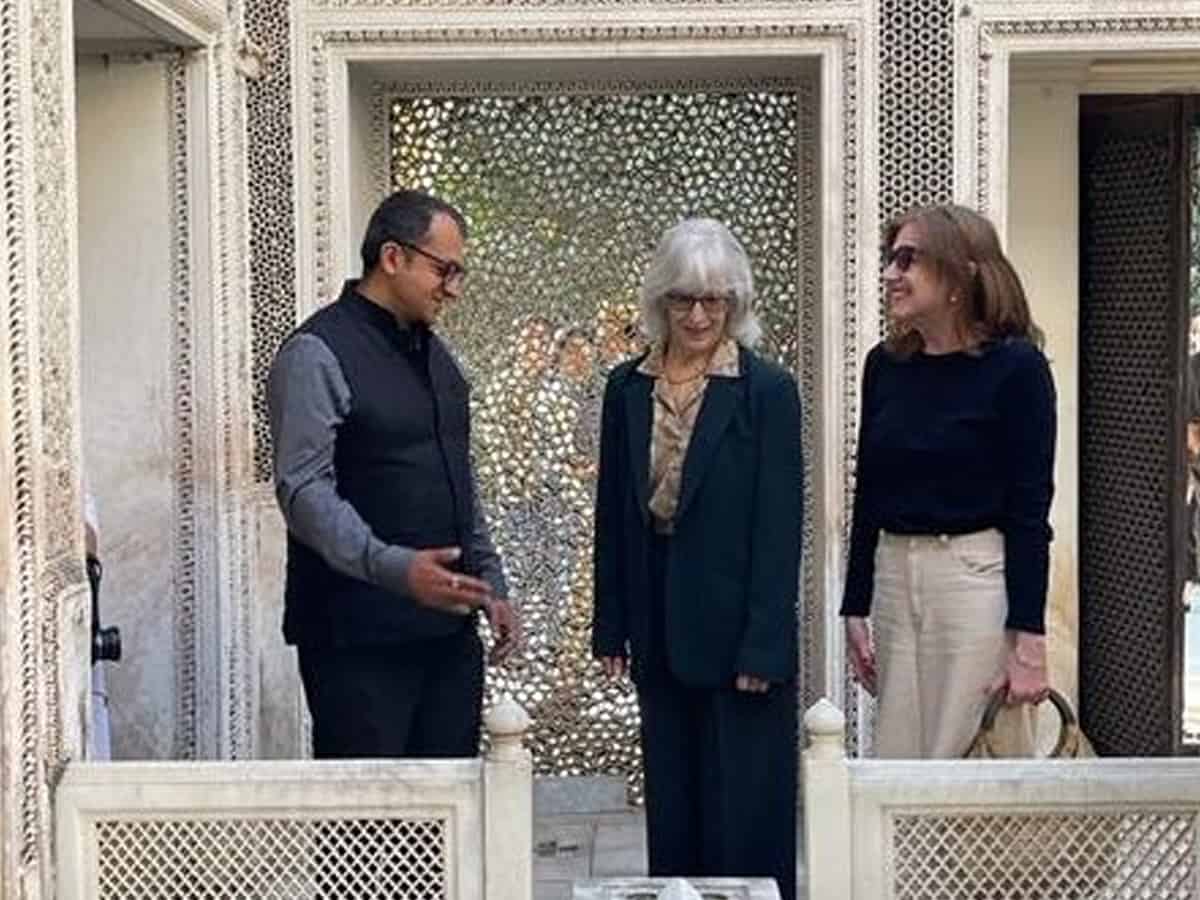
Hyderabad: The decision by US authorities to fund restoration of Paigah Tombs has come not a day too soon. The magnificent tombs, considered the Taj of the South, cry for attention. The exquisitely carved wooden doors and ornamental work is in a state of decay. One can see gaping holes in the marble lattices and stucco panels. In some tomb enclosures half of the jail work is missing. Vagaries of nature and poor upkeep have led to the plaster peeling off at several places. Official apathy and stamp of neglect is all over this protected monument.
Approach to this protected monument is congested and marked by a cluster of rundown houses. Forget tourists, even locals find it difficult to reach this place situated beyond the Owaisi Hospital in Santoshnagar. “There is no maintenance at all,” says the caretaker pleading anonymity.
The Paigah Nawabs, who rank next to the Nizams in royal hierarchy, had a yen for aesthetics. They wanted even their mausoleums to be architectural marvels. Decades after they are dead and gone, visitors are dumbstruck by the sheer beauty of their tombs. The Paigah Tombs are a fine blend of marble and lime. Every inch of the mausoleum is richly embellished – be it the ornamental pillars, lattice screens, minarets, trellises in various shapes, roundels and wooden doors. The stucco work represents the Asaf Jahi and Rajasthani styles and is marked by unique geometrical patterns. The whole thing is in perfect harmony.
The Paigah complex contains 27 tombs in all from West to East, including a beautiful mosque. The Paigahs, who had matrimonial ties with the Nizams, were staunch loyalists of the Asif Jahs. Nawab Taig Jung Bahadur, Shamsul Umra I, the Paigah patriarch, is believed to be a descendent of the second Caliph of Islam, Hazrath Omer. The family patronised art and culture and was well versed in the craft of warfare.
Taig Jung Bahadur is stated to have declined the offer of Prime Ministership and preferred to remain just a soldier all through his life. His is the first tomb one finds in the Paigah complex followed by tombs of other family members such as Nawab Fakhruddin Khan, Nawab Rafiuddin Khan, Nawab Rashiduddin Khan and Nawab Sir Vicarul Umra, the man who constructed the famed Falaknuma Palace.
The tomb of Asman Jah Bahadur is open to the sky, perhaps in keeping with his name. The arched corridors of the tombs are in Mughal style. What strikes visitors is the intricate Indo-Islamic jali work carved in wood apart from the marble and stucco elements.
No wonder the US chargé d’affaires, A. Elizabeth Jones, was struck by the beauty and elegance of the tombs when she visited them recently. She described them as “absolutely gorgeous sites” and hinted at a $250,000 grant fund for their restoration. Preserving such cultural landmarks, she felt, would benefit the entire humanity. According to Ratish Nanda, CEO of Agha Khan Trust for Culture, the stucco work that exists in Paigah Tombs is not to be found anywhere else in India.
The final abode of the Paigah nobles both delights and saddens. Hope with the US intervention things will at last look up for this diamond in the dust.
